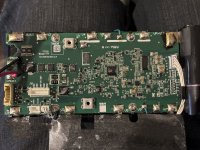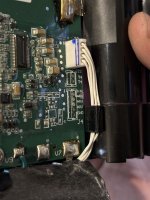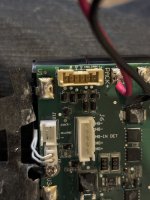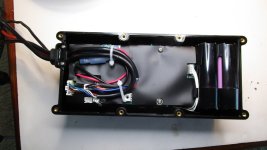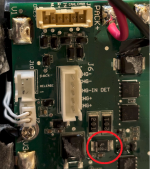100percentjake
10 mW
Hey guys. I have been working on adding a range extender in the form of a parallel battery on my Honda Motocompacto and goofed up and hooked it up in parallel without a balancer/balancing like an idiot. After a powercycle or two the internal battery in the Honda stopped outputting any voltage. Took it apart and I'm getting 38.12v across VG/VP but 0v out of the BMS itself. Nothing looks burned, I'm assuming the external battery just tried to pull a bunch of amps from the battery and it went into some sort of deep protect mode.
Found a few things on the board. Firstly, it talks to the controller/dashboard via Canbus. Pretty typical, potentially good news for aftermarket/DIY batteries. Found an unused header labeled J10 with pins 'pack-' and 'release'. Found another unpopulated header that appears to be... programming/JTAG header? 3.3V, SDWIO, SWCLK, REST, GND. Nothing obvious to reset the BMS.
A new battery is $321 (Honda Part number 08Z15-PR8-100R8) and I'm not entirely opposed to buying another one and sacrificing this battery to the DIY cause by putting an ANT BMS with CANBus in and seeing if I can make it work like OEM.
Any advice on getting this thing working again is welcome. The battery is a Dynapack model BL001.
Found a few things on the board. Firstly, it talks to the controller/dashboard via Canbus. Pretty typical, potentially good news for aftermarket/DIY batteries. Found an unused header labeled J10 with pins 'pack-' and 'release'. Found another unpopulated header that appears to be... programming/JTAG header? 3.3V, SDWIO, SWCLK, REST, GND. Nothing obvious to reset the BMS.
A new battery is $321 (Honda Part number 08Z15-PR8-100R8) and I'm not entirely opposed to buying another one and sacrificing this battery to the DIY cause by putting an ANT BMS with CANBus in and seeing if I can make it work like OEM.
Any advice on getting this thing working again is welcome. The battery is a Dynapack model BL001.


